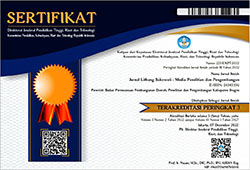MODELING OF THE NUMBER OF TUBERCULOSIS CASES IN INDONESIA
DOI:
https://doi.org/10.32630/sukowati.v4i2.204Keywords:
dependency spatial, lasso, multicollinearity, spatial heterogeneity, tuberculosisAbstract
One of the health issues listed in the Sustainable Development Goals (SDGs) is to end the tuberculosis epidemic in 2030. Indonesia is the country with the third-highest number of tuberculosis cases in the world after India and China in 2018. Aims of this study to model the number of tuberculosis cases in each province in Indonesia, depending on the characteristics of each region. Geographically Weighted Lasso (GWL) is a method used to overcome the local multicollinearity that appears in the Geographically Weighted Regression (GWR) model. By using this method, each region will have a different regression model according to its respective characteristics. There is local multicollinearity (VIF> 10) in each explanatory variable used. Banten, West Java, South Kalimantan, East Kalimantan, East Nusa Tenggara and Papua Province are provinces where all research variables affect the number of tuberculosis cases. The variable that has the most significant effect on the number of tuberculosis cases in each region in Indonesia is the number of health centers. Therefore, to end the number of tuberculosis cases, the government should increase the number of health centers and improve the health service.
Downloads
Published
How to Cite
Issue
Section
License
Copyright (c) 2021 Aida Meimela

This work is licensed under a Creative Commons Attribution 4.0 International License.


















